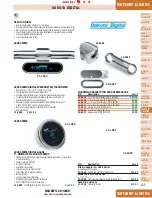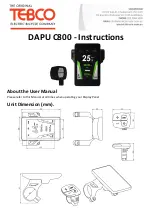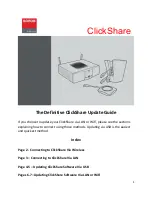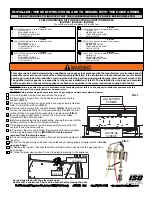
Force Sensor
Model No. CI-6537
4
®
Introduction
The CI-6537 ± 50 newton Force Sensor is designed to be used with a
PASCO Computer interface [
ScienceWorkshop
500 or 750]. This
version of the Force Sensor has an output between -8 volts and +8
volts and a range between -50 newtons and +50 newtons. In other
words, it produces -8 volts for -50 newtons, 0 volts for “zero” force,
and +8 volts for +50 newtons. (A push is considered to be positive, and
a pull is considered to be negative.) The sensor has strain gauges
mounted on a specially designed “binocular beam.” The beam deflects
less than 1 millimeter, and has built-in over-limit protection so it will
not be damaged if a force greater than 50 newtons is applied.
The Force Sensor consists of the housing for the beam and electronics,
a cable with a 8-pin DIN plug for connecting to the computer interface,
and a detachable hook. The housing has a
Tare
button (for zeroing the
sensor) on the same side of the housing as the cable and a thumbscrew
(for mounting on a support rod up to 1/2” diameter) on the end
opposite to the detachable hook.
The bottom of the housing fits into the accessory tray of a PASCO
Dynamics Cart. The top of the housing has the same dimensions as the
Dynamics Cart accessory tray, and includes notches at each end for
mounting the IDS “picket fence.” The top of the housing has two
threaded holes (M5 metric threads). You can mount any accessory that
fits on top of the Dynamics Cart into the tray on top of the Force
Sensor. For more information, see the PASCO catalog.
50 N
CAUTION!
Do Not Exceed 50 Newtons. (Push or Pull)
+ 50 N
Use No.0 Phillips head screw
driver
to
attach
to
PA
SCO Dynamics Cart
Push
To
T
are
(Button on side)
CI-6537
FORCE SENSOR
Output:
±
8V
for
±
50
N
T
A R E
Figure 1: Force Sensor Components
Thumbscrew
support rod
Hole for
Threaded hole
mounting screw
Tare button
Detachable
hook
To
interface



































